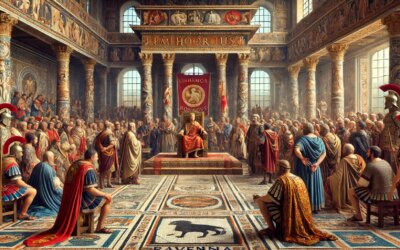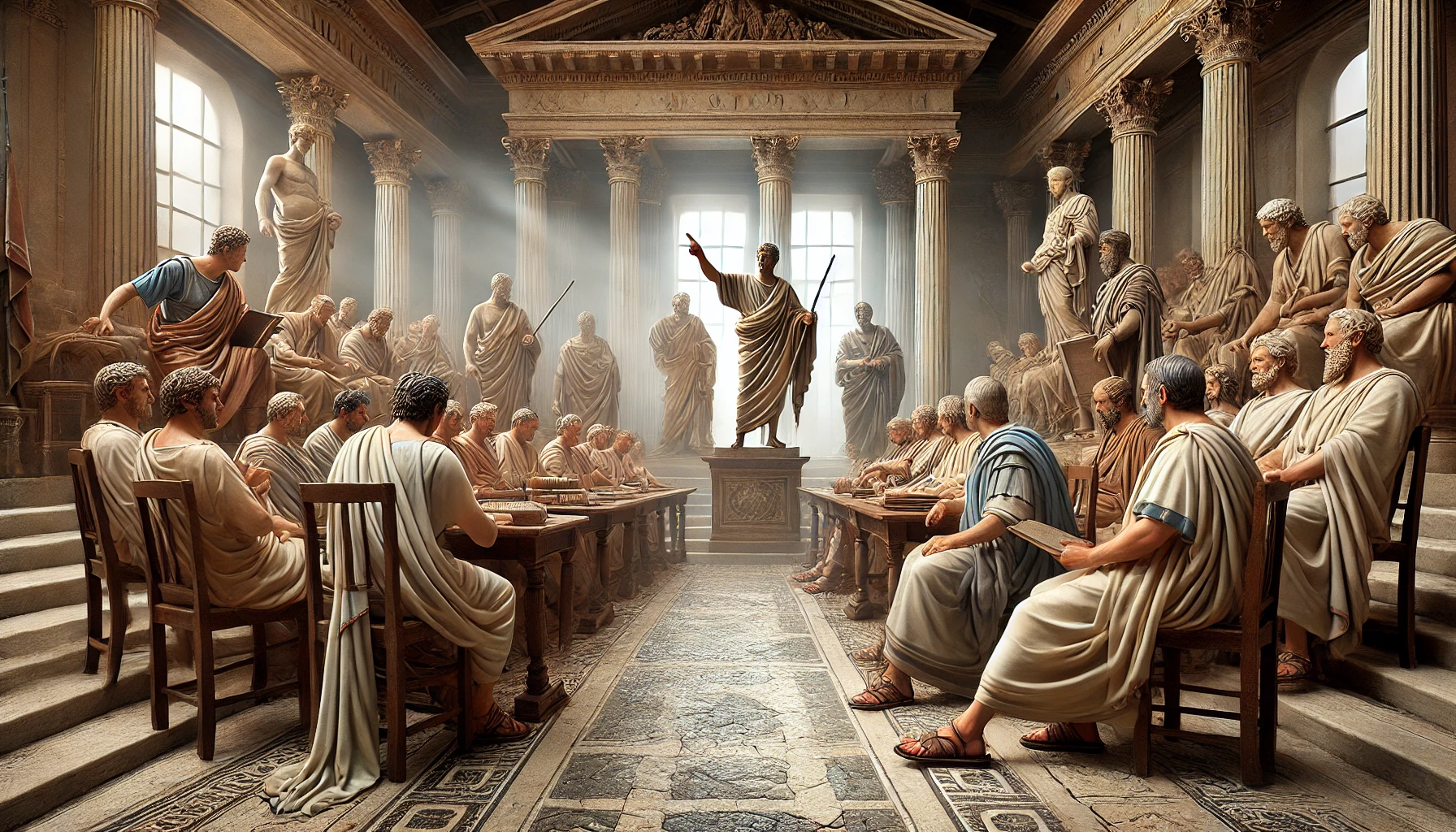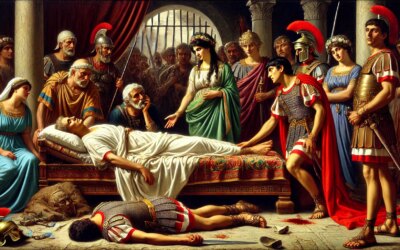Introduction: Rome’s Fragile Leadership in a Fractured World
By 440 AD, the Western Roman Empire had become a realm of diminished borders, strained resources, and growing instability. Its young emperor, Valentinian III, presided from Ravenna—not Rome—while his most powerful general, Flavius Aetius, commanded armies and political influence in equal measure. Their uneasy alliance defined the final decades of imperial power in the West, balancing ambition and necessity in a crumbling world.
Valentinian III: An Emperor Born into Turmoil
Born in 419 AD, Valentinian III became emperor at just six years old. His reign was dominated by powerful regents—his mother Galla Placidia, and later generals such as Boniface and Aetius. Though he held the title of Augustus from 425 until his assassination in 455, Valentinian’s rule was largely ceremonial. Yet he remained a critical figurehead in Rome’s waning attempts to maintain legitimacy and unity.
Flavius Aetius: The Last of the Romans
Aetius, often dubbed “the last of the Romans,” was a military prodigy. He had spent part of his youth as a hostage among the Huns, learning their tactics and forming alliances. Rising through civil war and court intrigue, Aetius eventually consolidated his power, becoming magister militum (Master of Soldiers) and the de facto ruler of the Western military.
Ravenna: The New Heart of Empire
By the mid-5th century, Ravenna had replaced Rome as the Western capital. Its marshy defenses offered protection, while its court became a hub of fragile politics. It was here that Valentinian and Aetius met repeatedly—sometimes as allies, sometimes in subtle opposition. Their relationship was marked by mutual need: Valentinian needed Aetius to defend the empire; Aetius needed Valentinian’s legitimacy to maintain control.
Military Threats and Political Maneuvers
During this period, the empire faced enormous threats. The Vandals had seized Carthage, the Visigoths challenged Roman authority in Gaul, and Attila the Hun loomed large in the East. Aetius responded by forging strategic alliances—most notably with the Huns themselves in earlier years—before ultimately leading a coalition against Attila at the Battle of the Catalaunian Plains in 451 AD. While Valentinian remained distant from the battlefield, he relied entirely on Aetius for survival.
Religious and Administrative Struggles
Internally, the empire was no less troubled. Disputes over church doctrine, tax burdens, and senatorial resentment undermined unity. Valentinian’s court, influenced by figures like the powerful eunuch Heraclius, often clashed with Aetius’ military faction. Yet despite tensions, the collaboration endured—at least temporarily—allowing the empire to maintain a semblance of stability.
The Breaking Point
In 454 AD, tensions reached their fatal conclusion. Valentinian, influenced by court advisors and fearing Aetius’ power, assassinated him during a council meeting. The act stunned the empire. Within a year, Valentinian himself was murdered by loyalists of Aetius’ faction. The removal of both figures accelerated the disintegration of imperial authority, ushering in an era of puppet emperors and barbarian kings.
Legacy: Two Men at the End of an Era
Valentinian III and Flavius Aetius symbolize the last coordinated effort to preserve the Western Roman state. One held a crown but lacked control; the other commanded armies but could never seize the purple. Their uneasy partnership forestalled collapse, but their deaths marked the beginning of the end. Within two decades, the Western Roman Empire would cease to exist in any meaningful form.
Conclusion: The Final Balance of Power
In 440 AD, as Valentinian and Aetius met in Ravenna’s marbled halls, they stood atop a world on the brink. Their choices, compromises, and ambitions shaped the dying breaths of Roman imperial power in the West. Though the empire they tried to preserve would not survive, their story remains a testament to leadership under pressure—and the human cost of holding an empire together at the edge of collapse.






